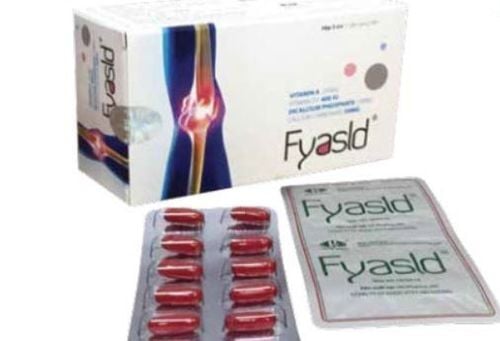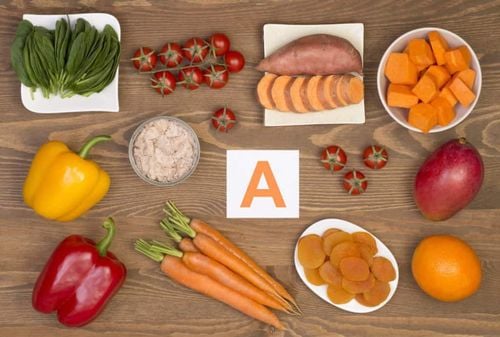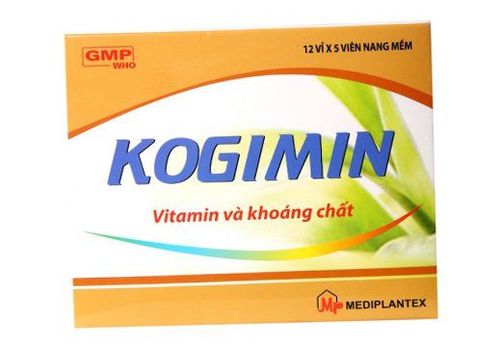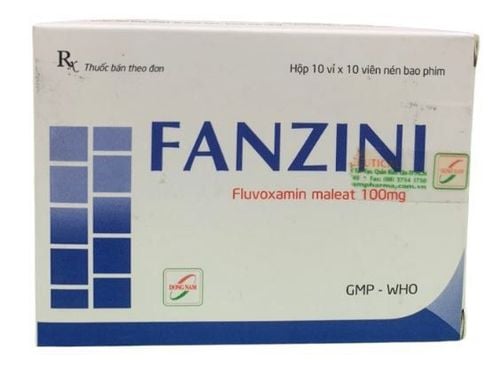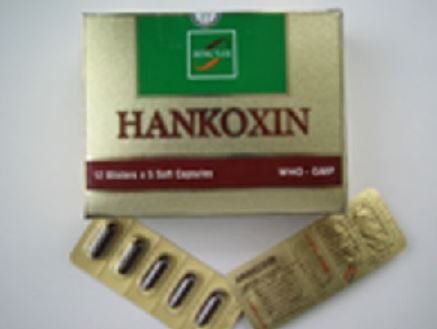This is an automatically translated article.
Vitamin A is a fat-soluble vitamin that plays an essential role in the maintenance of vision, body growth, immune function and reproductive health. Getting enough vitamin A from your diet will prevent symptoms of deficiency, including hair loss, skin problems, dry eyes, night blindness, and an increased chance of getting infections. Vitamin A deficiency is the leading cause of blindness in developing countries.1. Recommended general use guidelines for vitamin A
There are 2 types of vitamin A found in the diet.
Preformed vitamin A is found in animal products such as meat, fish, poultry and dairy products. Another is provitamin A found in plant-based foods such as fruits and vegetables. The most common provitamin A is beta-carotene. Vitamin A is also available in supplement form, usually as retinyl acetate or retinyl palmitate (transformed vitamin A), beta-carotene (pro-vitamin A), or a combination of converted vitamin A and provitamin A. To support vitamin A absorption, users need to add some fat in their diet. It is important not to overcook foods, as this reduces the vitamin A content.
The Food and Nutrition Board of the Institute of Medicine provides reference intake values (Dietary Reference) Intakes – DRIs) for vitamin A are as follows:
Infants (adequate dose, adequate intake – AI):
0 – 6 months old: 400 mcg/day 7 – 12 months old: 500 mcg/day Intake Recommended Dietary Allowance (RDA) for vitamins is the amount of each vitamin that people should get each day. The recommended intakes (RDAs) for vitamins are considered goals for each person.
Recommended intake (RDA) for children
1 – 3 years: 300 mcg/day 4 – 8 years: 400 mcg/day 9 – 13 years: 600 mcg/day Recommended intake (RDA) for children with:
Men 14 years and older: 900 mcg/day Female 14 years and older: 700 mcg/day Pregnant 14-18 years old: 750 mcg/day Pregnant women 19 years and older: 770 mcg /day Lactating women aged 14-18 years: 1,200 mcg/day Lactating women aged 19 years and over: 1,300 mcg/day
2. The richest food source of vitamin A
2.1. Beef liver Animal liver is one of the richest sources of vitamin A, including beef liver. This is because, like humans, animals store vitamin A in the liver. An 85-gram serving of sautéed beef liver contains 6,582 micrograms (mcg) of vitamin A.
Besides, liver is an organ meat that is high in protein and other nutrients, including copper, vitamins B2, B12, iron, good folate and choline.

Gan bò là một nguồn thực phẩm giàu vitamin A
2.2. Cod liver oil Cod liver oil is also an excellent source of vitamin A, with 1 tablespoon of cod liver oil providing 4,080 mcg of vitamin A. This and other fish oils are among the richest sources of omega-3 fatty acids, which help It is anti-inflammatory, protects the heart, and may treat or prevent depression. Cod liver oil is also an excellent source of vitamin D, with 1 tablespoon containing 340% of the recommended intake (RDA).
2.3. Sweet potatoes A baked sweet potato provides 1,403 mcg of vitamin A. Vitamin A is found in this vegetable in the form of beta carotene, and some studies have shown that vitamin A in this form can protect against cancer. prostate cancer and colon cancer. In addition, sweet potatoes are also low in calories and fat-free. They are a very good source of vitamin B-6, vitamin C and potassium. Sweet potatoes are high in fiber and with a low glycemic index, they can help you control your blood sugar.
2.4. Carrots Carrots are rich in beta carotene, and a half cup of raw carrots contains 459 mcg of vitamin A. With just 26 calories per serving, carrots make a healthy and light snack, especially when served alongside with hummus or Mexican Avocado Salad (Guacamole). Carrots are also rich in fiber, which can help prevent constipation and promote better gut health.
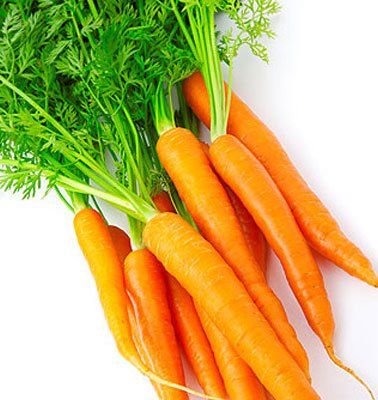
Một nửa cốc cà rốt sống chứa 459 mcg vitamin A
2.5. Black-eyed peas Beans are an excellent source of plant-based protein, and they're also rich in fiber. Each cup of boiled black-eyed peas contains 66 mcg of vitamin A. Black-eyed peas are also a good source of iron. Many studies have demonstrated the role of different types of beans in reducing the risk of heart disease, as well as improving conditions such as high blood pressure, stroke and type 2 diabetes.
2.6. Spinach Like other green leafy vegetables, spinach contains a lot of nutrients. Each half cup of boiled spinach provides 573 mcg of vitamin A. Some studies show that spinach can lower blood pressure and improve heart health.
2.7. Broccoli Broccoli is a healthy source of vitamin A with one-half cup providing 60 mcg. One serving of broccoli contains only 27 calories and is also an excellent source of vitamins C and K.
Vitamin K is essential for bone metabolism and blood clotting, while vitamin C boosts immune function and has antioxidant and anti-inflammatory properties. Eating cruciferous vegetables, such as broccoli, may also reduce the risk of developing certain cancers due to the presence of a substance called sulforaphane.
2.8. Bell peppers or sweet peppers Half a cup of sweet red bell peppers provides 117 mcg of vitamin A. This serving contains only 19 calories and is rich in vitamin C, vitamin B-6 and folate. Bell peppers are an excellent source of antioxidants, such as capsanthin or quercetin, which have anti-inflammatory and antihistamine properties.
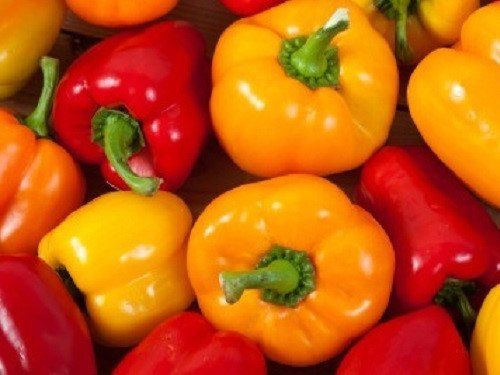
Ớt chuông cũng là một nguồn cung cấp vitamin A rất tốt
2.9. Mangoes An average fresh mango contains 112 mcg of vitamin A. Mangoes are rich in antioxidants and fiber, which may contribute to improved bowel function and blood sugar control.
2.10. Cantaloupe Half a cup of cantaloupe provides 135 mcg of vitamin A and is an excellent source of antioxidant vitamin C, which boosts immune function and protects against a number of diseases.
2.11. Dried apricots Just 1 serving of dried apricots contains 63 mcg of vitamin A. In addition, dried apricots and other dried fruits are also high in fiber and antioxidants. However, dried apricots also contain a lot of sugar and calories, so users should consume them in moderation.
2.12. Pumpkin pie Pumpkin pie is another vitamin A-rich snack, with one serving containing 488 mcg of vitamin A. This is because, like other vegetables, pumpkin is rich in beta carotene.
Besides, pumpkin is also a good source of antioxidants, such as vitamin C, lutein and zeaxanthin. Some studies indicate that foods containing high levels of these substances can help users preserve vision and prevent common eye diseases.
2.13. Tomato juice One-third cup of tomato juice contains 42 mcg of vitamin A, and tomatoes are rich in vitamin C and lycopene, both of which are antioxidants. Like pumpkin, tomatoes and tomato juice contain lutein and zeaxanthin that are both beneficial for eye health.
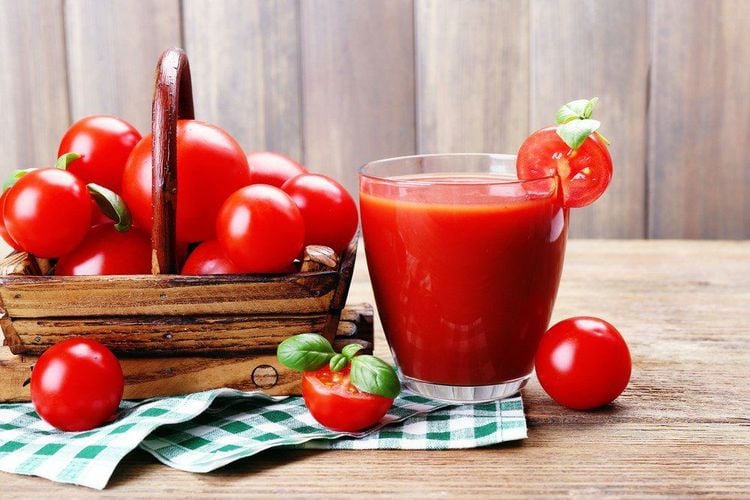
Một phần ba cốc nước ép cà chua chứa 42 mcg vitamin A
2.14. Herring One serving of pickled Atlantic herring (85 grams) provides 219 mcg of vitamin A, protein and vitamin D. Being a fatty fish, herring is a great choice for those looking to increase their omega- 3 good for heart and brain health. In fact, the American Heart Association (AHA) recommends eating 2 servings of fatty fish per week.
Many foods, both plant and animal sources, contain some amount of vitamin A. The best way to ensure adequate nutritional content is to eat a varied and balanced diet, full of fruits and vegetables. , vegetables, whole grains, healthy fats and lean protein. You can easily meet your vitamin A needs by regularly eating some of the foods listed in this article. Many other foods also contain fortified vitamin A, such as cereals, margarine, and dairy products.
Please dial HOTLINE for more information or register for an appointment HERE. Download MyVinmec app to make appointments faster and to manage your bookings easily.
Article referenced source: Heathline.com; Medicalnewstoday.com



